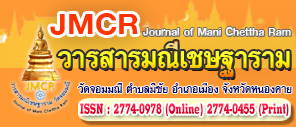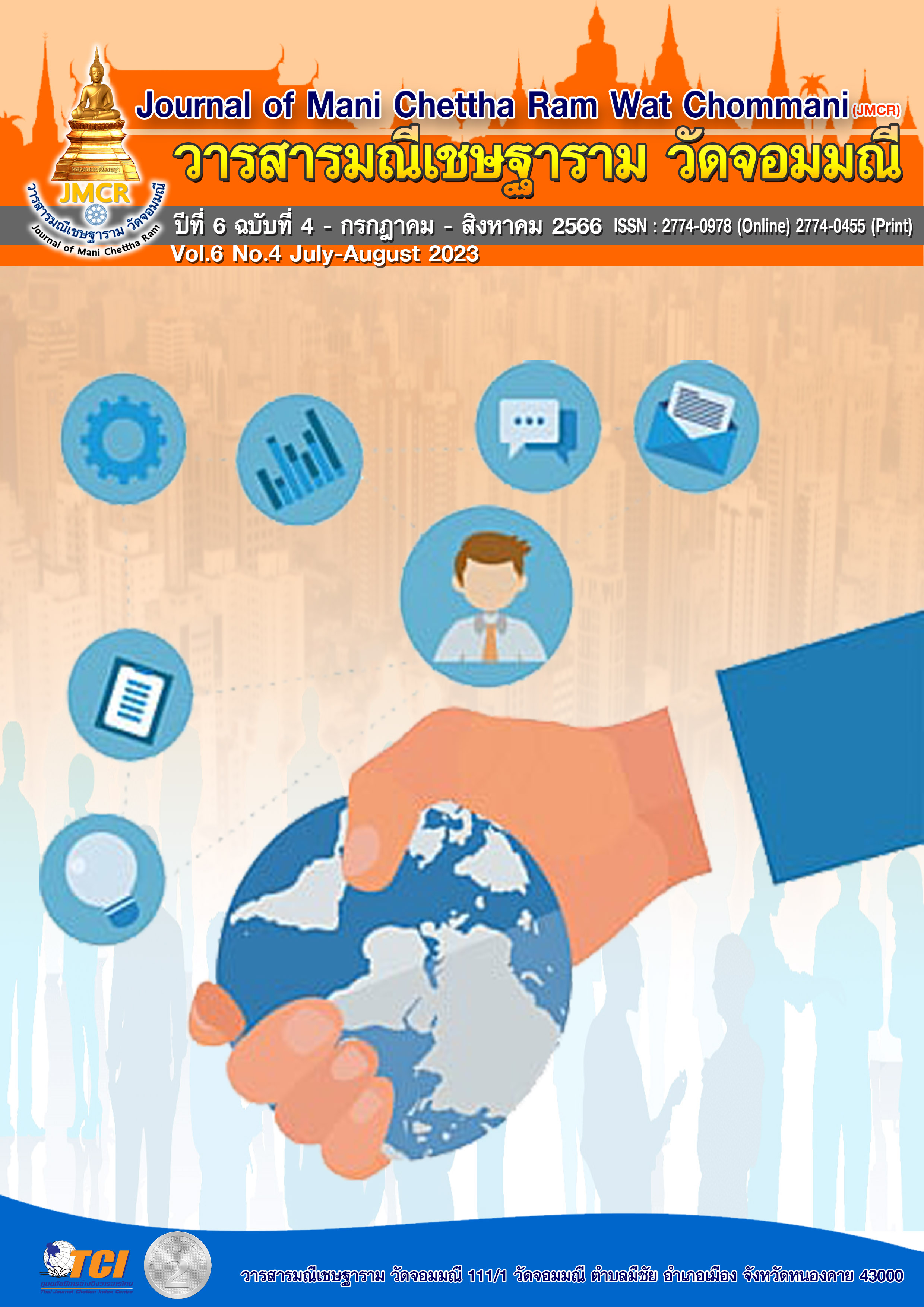A DEVELOPMENT OF THE DIGITAL LEADERSHIP TO THE GOOD GOVERNANCE OF SCHOOL ADMINISTRATORS UNDER LOEI PRIMARY EDUCATIONAL SERVICE AREA OFFICE 2
Keywords:
A Development of the Digital Leadership, the good governanceAbstract
The objectives of this research were: 1) to study the leadership in the
digital era of educational institution administrators; 2. to study the leadership in the digital era according to the principles of good governance of educational institution administrators; 3) to study the guideline to develop the leadership in the digital era according to the principles of good governance of educational institution administrators under the Office of the Loei Primary Educational Service Area 2. The samples used in the research were 320 participants. Statistics used for data analysis were frequency, percentage, mean, and standard deviation.
The research results were as follows:
- The overall mean value of the leadership in the digital era of
educational institution administrators was at a high level. The highest mean value was seen in the aspect of digital communication while the lowest mean value was seen in the aspect of innovation creation.
- The overall mean value of the leadership in the digital era
according to the principles of good governance of educational institution administrators was at a high level. The highest mean value was seen in the aspect of cost-effectiveness or economy. The lowest mean value was seen in the aspect of responsibility.
- The guideline to develop leadership in the digital era
according to the principles of good governance of educational institution administrators under the Office of the Loei Primary Educational Service Area 2 was that administrators should set regulations that are correct and fair, allow teachers and students to express their opinions, improve regulations to suit the situation adhered to righteousness, perform duties with fairness, honesty, sincerity, diligence, and patience. They should build human relations and have loving-kindness and generosity, and, should give opportunities for teachers, students, and the public to follow and review plans and projects through digital media.
References
ธัญลักษณ์ วงเครา. (2559). การใช้หลักธรรมาภิบาลของผู้บริหารสถานศึกษาระดับมัธยมศึกษาในจังหวัดเชียงใหม่. ใน การค้นคว้าแบบอิสระหลักสูตรปริญญาศึกษาศาสตรมหาบัณฑิต สาขาวิชาการศึกษา. มหาวิทยาลัยเชียงใหม่.
บุญชม ศรีสะอาด. (2554). การวิจัยเบื้องต้น พิมพ์ครั้งที่ 9. กรุงเทพมหานคร: สุวีริยาสาส์น.
มูฮำหมัดรุซลัน ลือบากะลูติง. (2564). ภาวะผู้นำดิจิทัลของผู้บริหารสถานศึกษาสังกัดสำนักงานเขตพื้นที่การศึกษามัธยมศึกษาตรัง กระบี่. วิทยานิพนธ์หลักสูตรศึกษาศาสตรมหาบัณฑิต สาขาวิชาการบริหารการศึกษา. คณะศึกษาศาสตร์และศิลปศาสตร์: มหาวิทยาลัยหาดใหญ่.
วัฒนชัย ศิริญาณ, วิทยา เจริญศิริ, สัญญา เคณาภูมิ. (2560). องค์กรแห่งนวัตกรรม: ทางเลือกใหม่สำหรับการพัฒนาในศตวรรษที่ 21 The Innovation Organization: The New Alternative for 21st Century Development. วารสารอินฟอร์เมชั่น Information, 24(2), 2560.
สำนักนโยบายและยุทธศาสตร์ สำนักงานปลัดกระทรวงศึกษาธิการ. (2563). แผนยุทธศาสตร์กระทรวงศึกษาธิการ. กรุงเทพมหานคร: กระทรวงศึกษาธิการ.
สถาบันพระปกเกล้า. (2558). ดุลอำนาจในการเมืองการปกครองไทย. กรุงเทพมหานคร: เอ.พี. กราฟิค ดีไซน์และการพิมพ์.
สำนักงานเขตพื้นที่การศึกษาประถมศึกษาเลย เขต 2. (2565). แผนปฏิบัติการประจำปีงบประมาณ พ.ศ. 2565. สำนักงานเขตพื้นที่การศึกษาประถมศึกษาเลย เขต 2 สำนักงานคณะกรรมการการศึกษาขั้นพื้นฐาน.
อัญชลี โลเชียงสาย. (2565). การบริหารตามหลักธรรมาภิบาลของผู้บริหารสถานศึกษาที่ส่งผลต่อประสิทธิผลของสถานศึกษา สังกัดสำนักงานเขตพื้นที่การศึกษาประถมศึกษาสุพรรณบุรี เขต 3. วิทยานิพนธ์หลักสูตรครุศาสตรมหาบัณฑิต สาขาวิชาการบริหารการศึกษา. มหาวิทยาลัยราชภัฏนครปฐม.
Krejcie, R. V. & Morgan, D. W. (1970). Determining Sample Size for Research Activities. Educational and Psychological Measurement, 30(3), 1970.




